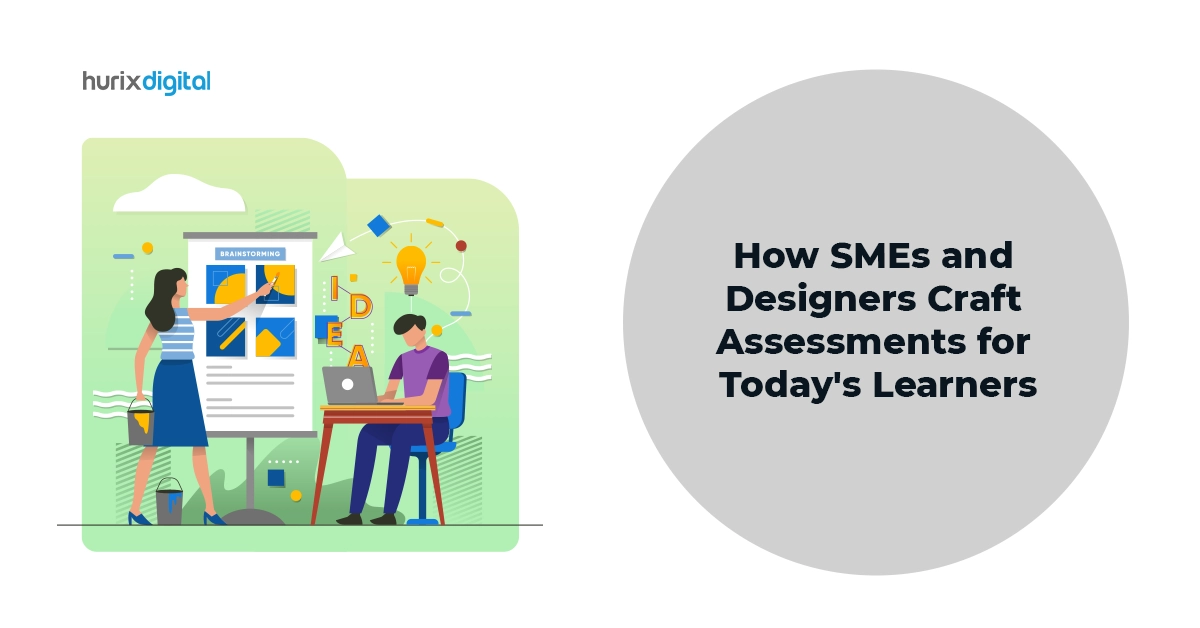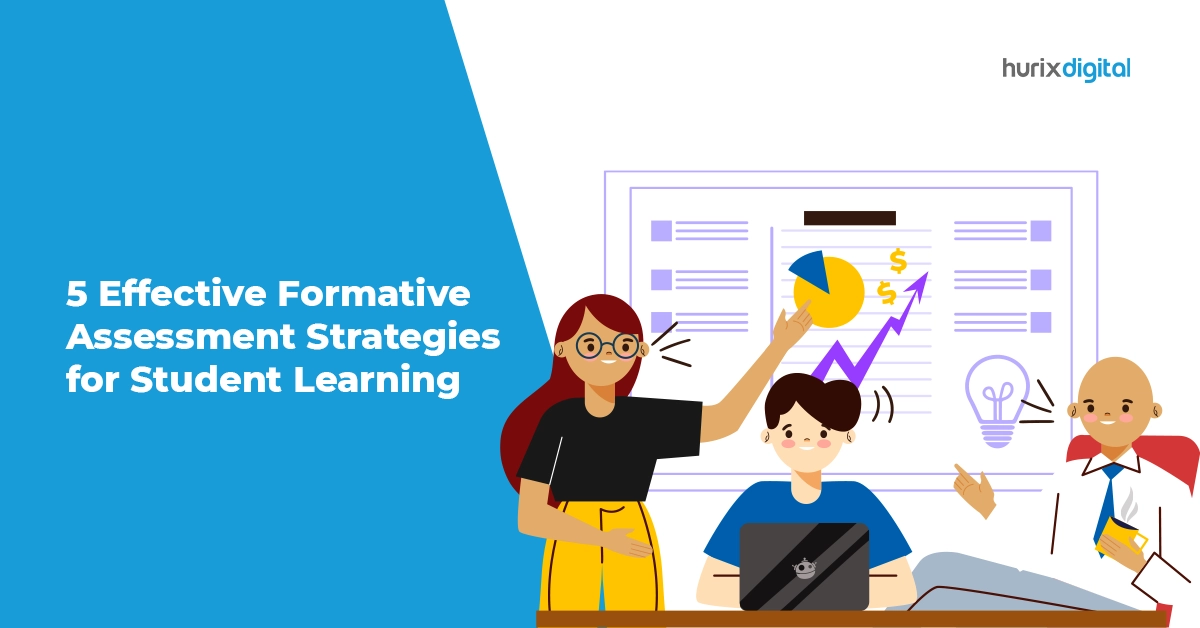Summary
SMEs and designers leverage online assessment tools to develop aligned, balanced assessments. Emerging techniques like stealth assessment and AI-enabled adaptive testing allow for personalized, engaging evaluation of modern learners.
The education sector has undergone a massive transformation in recent years. With the proliferation of ed-tech tools and online learning, educators are rethinking traditional approaches to student assessments. Crafting effective assessments is crucial for understanding student learning and designing personalized instruction. In this blog, we’ll explore how subject matter experts (SMEs) and designers are creating modern assessments suited for today’s learners.
Table of Contents:
- The Shift to Online Assessment Tools
- Six Key Benefits of Online Assessment Tools
- Eleven Key Considerations for SMEs When Crafting Assessments
- Partnering with Hurix Digital to Craft Impactful Assessments
The Shift to Online Assessment Tools
Gone are the days when pen and paper tests were the primary assessment method. While traditional exams still have their place, educators are increasingly adopting online assessment tools that provide greater flexibility, analytics, and options for measuring student progress. SMEs and designers are leveraging technology to develop all types of digital assessments from quizzes and assignments to simulations and games.
Six Key Benefits of Online Assessment Tools
- Accessibility on any device from anywhere
- Instant feedback and automated grading
- Data-driven insights into student performance
- Ability to personalize and differentiate assessments
- Engaging multimedia content types
- Cost and time savings
These advantages allow teachers to assess more frequently, gain actionable insights, and make data-based decisions to enhance student learning.
Eleven Key Considerations for SMEs When Crafting Assessments
1. Crafting Aligned and Balanced Assessments
With limitless possibilities, how do SMEs and designers determine what types of assessments to build? It starts with a deep understanding of course objectives, materials, and activities.
2. Align Assessments to Learning Goals
Every assessment should directly connect to course learning goals and standards. SMEs analyze objectives and blueprints to craft assessments that accurately measure the desired skills and knowledge. Well-aligned tests evaluate students on the key concepts covered in a unit or lesson.
3. Balance Assessment Types
An effective assessment plan incorporates a variety of assessment types to evaluate different levels of learning. SMEs and designers balance formative assessments (frequent, low-stakes tests to gauge ongoing progress) with summative assessments (evaluating mastery at the end of an instructional unit). Assessments range from selected response questions to open-ended performance tasks allowing students to demonstrate their competency in diverse ways.
Also Read: Subject Matter Expert – Services Offered by SMEs in Physics, Chemistry, Math, and Biology
4. Apply Universal Design for Learning
SMEs also consider principles of Universal Design for Learning when creating assessments. This involves building flexibility into tests, offering multiple ways for students to respond, and providing appropriate accommodations for diverse learners’ needs. The goal is to reduce barriers and allow all students to properly demonstrate their knowledge and skills.
5. Emerging Assessment Design Approaches
With digitization, SMEs and designers have an expanded toolkit to build engaging, effective assessments. Here are some current trends and techniques for modern test design:
6. Scenario and Simulation-Based Assessments
Immersive scenarios and simulations present realistic situations for students to navigate, applying their skills to solve problems. This provides an authentic way to evaluate problem-solving and critical-thinking capabilities.
7. Stealth Assessments
These seamlessly embed assessment items into instructional activities and games. Students may not even realize they are being assessed as they complete challenges and tasks, reducing test anxiety.
8. Open-Ended and Constructed Responses
Rather than select right answers, open-ended questions allow students to explain concepts in their own words, write essays, build models, or create multimedia – demonstrating deeper learning.
9. Adaptive Assessments
These dynamically adjust question difficulty and prompts based on individual student responses and needs, providing personalized evaluation and feedback.
10. Analytics-Enabled Items
Each test item is tagged with metadata so educators can filter performance reports by academic standards, learning objectives, and more. This supports detailed analysis of strengths/weaknesses.
11. Assessments for the Future
AI and machine learning will continue advancing how assessments are constructed, delivered, and analyzed. Assessments will become more integrated into learning activities, providing ongoing feedback to better support student success.
Related Article: SMEs and the Art of Ensuring Content Relevance in Assessments
Partnering with Hurix Digital to Craft Impactful Assessments
As experts in learning design, Hurix Digital helps education companies, publishers, and institutions develop best-in-class assessments tailored to modern learners. Their dedicated team of SMEs, learning designers, and developers craft innovative online tests leveraging cutting-edge edtech. Hurix Digital builds assessments aligned to standards that balance formative and summative evaluation. Their solutions incorporate emerging techniques like stealth assessment and adaptive testing powered by AI algorithms. Whether constructing tests for K-12 classrooms or higher education courses, Hurix Digital applies proven methodologies to create assessments that engage learners and provide meaningful insights into student achievement.
Partner with Hurix Digital to build the next generation of assessments that effectively evaluate today’s tech-savvy students.







